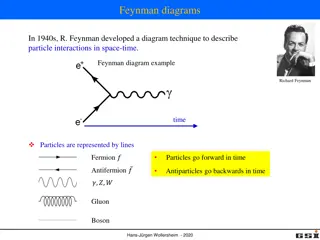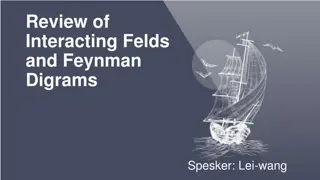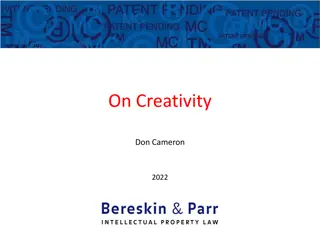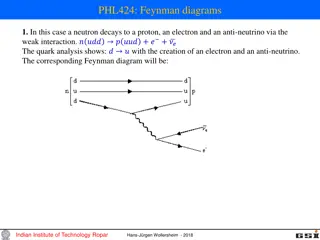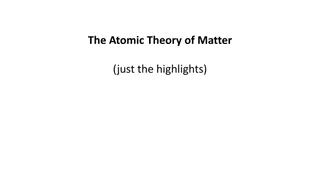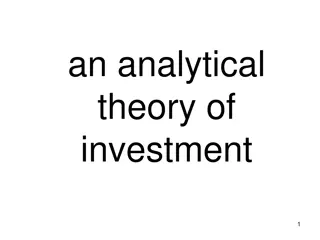Feynman Diagrams in Particle Physics
Feynman diagrams, developed by Richard Feynman in the 1940s, are a graphical technique to represent particle interactions in space-time. These diagrams use lines to depict particles, with fermions moving forward in time and antifermions moving backward. Vertices in the diagrams represent points wher
5 views • 19 slides
Enhancing Learning Through Question Formulation Technique (QFT)
Sarah Westbrook, Director of Professional Learning at The Right Question Institute, explores the importance of teaching question formulation skills. The session covers the benefits of QFT in collaborative learning, real classroom examples, and why questioning is crucial now. Learn how to access free
29 views • 84 slides
Interacting Fields and Feynman Diagrams in Quantum Field Theory
Delve into the fascinating world of quantum field theory with a focus on interacting fields and Feynman diagrams. Explore perturbation theory, correlation functions, Wick's theorem, and Feynman diagram rules to gain insights into preserving causality, calculating two-point correlation functions, and
5 views • 18 slides
Insights on Scientific Creativity and Imagination in Science
Explore the origins of ideas, the scientific method, and the role of imagination in scientific discovery through the perspectives of renowned figures like Isaac Asimov, Richard Feynman, and Donald M. Cameron. Delve into the interplay between creativity, constraints, and reality in the pursuit of sci
16 views • 31 slides
Feynman Diagrams in Particle Physics
Exploring the concept of Feynman diagrams in particle physics through various examples, such as the decay of particles like neutrons, protons, electrons, anti-neutrinos, pi-mesons, and more. The diagrams illustrate the interactions between quarks and leptons, showcasing the transformations and decay
0 views • 14 slides
Unveiling the Atomic Theory of Matter: Highlights
Matter comprises atoms and molecules in continuous motion, as evidenced by Brownian motion. The precise size of atoms was estimated at 10^-10 meters through experiments. The arrangements of molecules differ in solids, liquids, and gases, with Feynman highlighting the significance of the atomic hypot
5 views • 33 slides
On-Shell Methods in Quantum Field Theory
Delve into the intriguing realm of on-shell methods in quantum field theory through a comprehensive exploration of techniques like BCFW recursion relations, unitarity principles, Feynman integrals, and more. Uncover the intricacies of calculating tree amplitudes, handling diagram-by-diagram challeng
3 views • 53 slides
Current Status of RHICf Proposal and Plans
Discussion on the RHICf proposal and plans, including T-dependence correction and physics motivations such as Feynman scaling, nuclear effects in light ion collision, and spin asymmetry in neutron production. Activities since April with submissions and presentations to PAC, preparation of proposals,
3 views • 24 slides
Green's Functions and Dyson Expansion in Quantum Theory
The significance of Green's functions, Dyson equations, Feynman diagrams, and more in quantum theory. Understand the relation to solutions of differential equations, electron density of states, and perturbation theory.
2 views • 18 slides
Introduction to Nanomaterials and Nanotechnology
The term "nano" originates from the Greek word "nanos," meaning small. Nanoscience and nanotechnology deal with very tiny objects, leading to unique properties and applications in various fields. When bulk materials are transformed into nanomaterials, their properties undergo significant changes, im
0 views • 16 slides
Analytical Theory of Investment: Insights from Fischer Black and Real Option Theory
Explore the foundations of economics through the analytical theory of investment, as discussed by Fischer Black, with a focus on real option theory and its implications for capital budgeting. Learn about the practical utility of quantum electrodynamics in financial economics and the potential applic
4 views • 61 slides
Quarks, Leptons, and Particle Interactions
Explore the world of subatomic particles with topics ranging from quarks and leptons to Feynman diagrams and conservation laws. Dive into the differences between hadrons and leptons, understand the properties of quarks, and discover the intricacies of beta decay and particle interactions.
1 views • 13 slides
Unraveling Quantum Mechanics with Emlyn Hughes and Feynman Quotes
Delve into the enigmatic world of quantum mechanics with insights from Emlyn Hughes and thought-provoking quotes from Feynman. Explore the challenges and complexities of understanding this fundamental field of physics.
0 views • 19 slides
Weak Decays with Feynman Diagrams
Explore the world of weak decays in particle physics through the use of Feynman diagrams. Learn about the quarks involved, their transformations, and the creation of mesons and baryons. Dive into the intricate details of particles and their interactions within the realm of quantum mechanics.
0 views • 5 slides
Reducing Feynman Integrals Using Blade in Collider Physics Workshop
Exploring the reduction of Feynman integrals using advanced techniques like Blade in the context of collider physics. This presentation covers perturbative calculations, IBP reduction, algorithms, examples, and the significance of reducing integrals for precise predictions in high-energy physics.
0 views • 29 slides
Unified Path Integration for Quantum Systems
Setting up a path-integration approach for bosonic and fermionic systems to determine equilibrium properties of quantum fluids at a given temperature. Includes discussions on partition functions and the Feynman path-integral method for quantum mechanics at finite temperatures.
0 views • 26 slides
Understanding Feynman's Diagrams, Hedin's Equations, and the GW Method
Explore the concepts of Feynman's diagrams, Hedin's equations, and the GW method in theoretical physics. Learn about fundamental interaction vertices, self-energy, Dyson equations, and the GW approximation. Discover the application of density functional theory and the derivation of Hedin's equations
3 views • 16 slides
Exploring Particle Physics: Accelerators, Discoveries, and Quantum Electrodynamics
Delve into the fascinating world of particle physics with a comprehensive exploration of particle accelerators, pivotal discoveries in the field, and the intriguing realm of Quantum Electrodynamics. From the fundamental concepts of Vq and E=mc2 to significant breakthroughs like the detection of elec
1 views • 14 slides
Uncovering the Truth: Cargo Cult Science, Scientific Method, and Expert Insights
Explore the dangers of cargo cult science, the essence of the scientific method, and gain valuable insights from experts like Dr. Ben Goldacre and Dr. Richard Feynman. Delve into the importance of maintaining objectivity and avoiding pseudoscience pitfalls for a deeper understanding of the unknown.
0 views • 19 slides
Unveiling Maximally Unitary Results in Gauge Theories
Explore advances in maximal unitarity at two loops, focusing on the intricate interplay of string theory, N=4 SUSY gauge theory, and integrability in gauge theories. Delve into the challenges with Feynman diagrams and the quest for on-shell methods in high-energy physics research.
1 views • 36 slides
Exploring Feynman Diagrams and Particle Interactions in Space-Time
Delve into the fascinating world of Feynman diagrams, a diagram technique developed by R. Feynman in the 1940s to describe particle interactions in space-time. Understand how particles are represented, the main assumptions and requirements, vertices, and the significance of Feynman diagrams in physi
3 views • 19 slides
Understanding Feynman Diagrams and Perturbation Theory in Quantum Physics
Explore the concepts of Feynman diagrams and perturbation theory in quantum mechanics and quantum field theory. Learn about their motivations, applications in experimental physics, and graphical representations for simplifying complex calculations.
1 views • 14 slides
Understanding Feynman Diagrams and Particle Interactions
Learn about Feynman diagrams in particle physics, developed by Richard Feynman in the 1940s to describe interactions in space-time. Explore the representation of particles, vertices, conservation laws, and more in this diagram technique.
1 views • 19 slides
